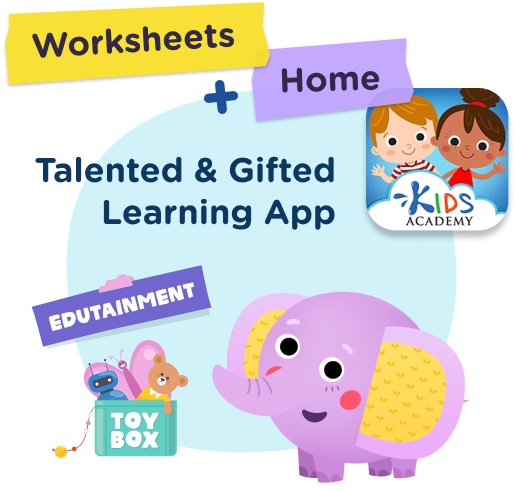Dealing with Student Attention Deficit and Overstimulation: Advice for Teachers
May 30, 2025

Hello! I'm Alison Jane Carter, an elementary teacher from the UK. I have worked with students around the world, from a variety of backgrounds, of all ages. I have also worked in the holistic, wellbeing sphere supporting adults and children through difficulties as a qualified Trauma Sensitive Yoga and Pilates Teacher. Focusing on creating a nurturing, boundaried, beneficial environment is at the centre of all I do. I hope to share my perspective with you in this article today.
Rising Reliance on Digital Devices
As teachers we are all trying our best to create a nurturing, productive classroom that is not only a beneficial learning environment, but also a safe space for emotional and social growth and development.
Supporting students with additional needs, such as those with ADHD can be challenging, especially in a time of rising reliance on digital devices. The abundance of digital hyper-entertaining content that keeps kids glued to their screens may affect the dopamine reward system in the brain, creating dependance on constant stimulation. This can negatively impact children's ability to concentrate and settle. In this reality, more and more teachers find themselves trying to facilitate mentally overstimulated and disengaged students.
Our article will explore the ways teachers can overcome these challenges.
Background: Overstimulation, Reduced Focus and Learning Barriers
According to the British charity ADHD UK, Attention Deficit Hyperactivity Disorder is characterized through a persistent pattern of inattention and/or hyperactivity–impulsivity that affects the ability to function and develop on a daily basis.
A study called The screens culture: impact on ADHD and published by the National Library of Medicine, concludes that time spent using digital devices may exacerbate ADHD symptoms. The study cites that children are often using devices for up to three hours each day. The study says internet addiction negatively impacts those with psychiatric disorders, and ADHD in particular, due to the loss of time spent on more developmentally challenging tasks.
It is worth recognising however, as the Child Mind Institute states, not all students who have trouble paying attention have ADHD. All children have shorter attention spans, especially younger students. There are many different factors that contribute to reduced focus, trouble paying attention, fidgeting and lack of concentration. These can be due to tiredness, overstimulation, OCD, home factors, stress, developmental factors, and other learning barriers.
Let's dive into the techniques teachers can employ to keep students engaged and, of course, calm in our classrooms.
Ways to Manage it in Class
1. Lesson Formatting
One of the ways to accommodate students with ADHD, and all students struggling with overstimulation and reduced focus, is by implementing a structured lesson format. If the learning flow is clear, by outlining the activities that will be undertaken, it can help to keep students engaged and decrease them zoning out.
As mentioned above, children's attention span can be fleeting for a number of reasons, not just ADHD, therefore it is incredibly important to structure lessons to include two to three activities.
I tend to start every lesson by sharing the lesson goal - for example “Lets learn about number bonds and make a super cute spotty ladybug!”. Break the activities down on the board and have the kids read them aloud. Usually include:
- Interactive warm up - teacher led to explain key concepts for the lesson.
- Individual student activity - to facilitate individual focus and concentration.
- Peer based activity - teamwork, quiz and peer checking.
2. Bringing Students Back on Task
Children with ADHD, and other barriers to learning, may require support to begin or finish activities. So it is important to keep an eye on their progress and, when necessary, bring them back to the task at hand.
Having a clear set of class guidelines about what is expected from all students in class can help at times like this. For example, I have taught multiple students who often wander around the classroom or exit the room when they lose focus. Gently guiding them back inside, to their seat, and reminding them of class guidelines and safety is important. It is also useful to praise the work they have done so far to bring them back on task.
Rewards programs can also be useful to encourage students with shorter attention spans and to bring them back to what they need to do at this very moment.
3. Limit Screen Time
At the school I work at, students and parents sign an agreement at the start of the year to limit their child's amount of screen time on a daily basis to support development. This provides a framework to ensure students do not spend all their time at home staring at a screen. Teachers liaise with parents and students throughout the year to uphold this agreement.
When it comes to use of screens in the clasroom, this should also be limited and open conversations should be had with kids to explain why this approach is being taken. Activities that encourage imagination and creativity should be undertaken instead.
4. Time and Space to Reset
Something that I have found especially beneficial in my classroom, especially for the students with ADHD and other additional needs, is implementing a reset or quiet time on a regular basis. All children need time to decompress and being “on the clock” throughout the school day can be exhausting.
Giving students 10 minutes to read a book, draw, rest, move their body or breathe allows them to refocus. It is unreasonable to expect children to remain focused ongoingly without adjusting their schedule to include brain breaks throughout the school day.
Studies have found that brain breaks increase the way the brain functions, improve focus, mood and learning, help with behaviour, aid oxygen flow in the bloodstream and strengthen relationships in the classroom.
5. Take it Day by Day
Ultimately every child is unique, they all come to school with things they excel at and things they struggle at. Our job as teachers is to facilitate them to feel safe and be able to grow at their own pace
Hopefully the techniques listed above can support you within the classroom and help you accommodate your students to thrive, remain engaged and feel relaxed to become the best versions of themselves.












